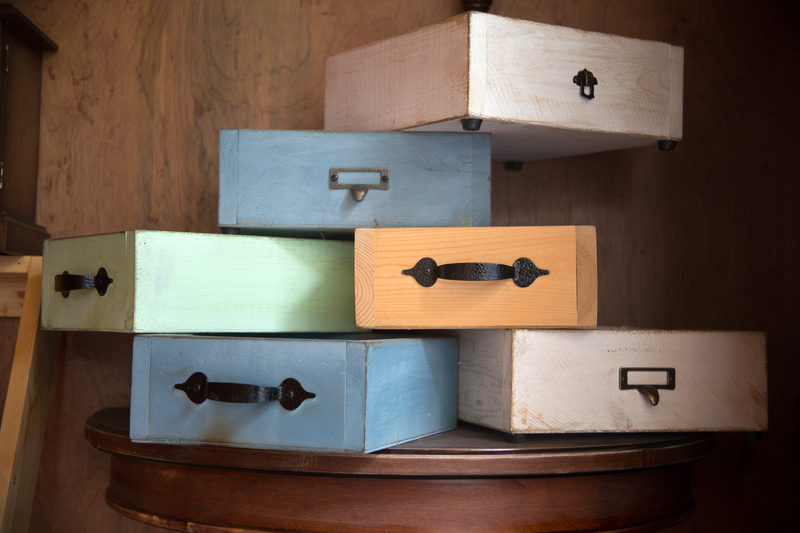Transporting Your Bed and Mattress with Ease
Posted on 01/06/2025
Transporting Your Bed and Mattress with Ease: A Comprehensive Guide
Moving homes is both an exciting and daunting experience, and one of the most challenging pieces of furniture to relocate is undoubtedly the bed and mattress. Whether you are swapping apartments, upgrading your living space, or simply redecorating, transporting your bed and mattress with ease is essential to protect your investment and ensure restful sleep in your new home. In this in-depth guide, you'll discover the best methods, tips, and tricks to make the process seamless and stress-free, no matter the bed size or situation.

Why Proper Bed and Mattress Transportation Matters
Your bed and mattress are likely among the most expensive and heavily used pieces in your home. Failing to transport them correctly could lead to:
- Structural damage to bed frames or headboards
- Wear and tear on mattress springs and foams
- Staining or contamination from dirt and moisture
- Reduced lifespan and comfort
Protecting these assets during your move saves you time, money, and stress in the long run.
Planning Your Bed and Mattress Move
Assess the Size and Weight
Before you start, measure your bed and mattress dimensions, and determine their weight. A queen or king-sized mattress is much heavier and more unwieldy than a twin, affecting the vehicle and assistance required. Create a checklist:
- Mattress type (Twin, Full, Queen, King, Cal King, etc.)
- Bed frame material (wood, metal, upholstered, etc.)
- Special features (storage drawers, adjustable bases)
Choose the Right Vehicle
For easy bed and mattress transportation, make sure the vehicle matches your load:
- Pick-up trucks are suitable for single beds and mattresses
- Vans or box trucks work for larger sets and multiple pieces
- Enclosed vehicles offer protection from weather and road debris
Always double-check the vehicle's internal dimensions to avoid last-minute surprises!
Disassemble the Bed Frame
Most beds are too bulky to move in one piece. Disassemble your frame, removing the headboard, slats, and support beams if possible. Use ziplock bags for bolts and screws, and label all parts with masking tape and a marker.
Prepping Your Bed and Mattress for the Move
Cleaning and Covering
- Vacuum your mattress and bed frame to remove dust and debris
- Wrap the mattress in a high-quality mattress bag for moving. This guards against moisture, stains, and pests. Mattress bags are available at most moving supply stores or online retailers.
- For upholstered headboards or footboards, use plastic wrap or moving blankets to prevent tears and scratches.
Securing and Packing the Parts
Mattresses can be awkward: their size and flexibility make them prone to bending, so handle them with care. Keep the mattress upright during transport if possible. For frames:
- Bundle slats and beams together with rope or shrink wrap
- Pack screws, fittings, and smaller hardware in labeled bags taped to the frame or placed in a moving box marked "Bed Parts"
- Use moving blankets or towels to cushion wooden parts and prevent scratches
How to Carry and Load Your Bed and Mattress Safely
Use Proper Lifting Techniques
- Bend at the knees and keep your back straight when lifting heavy pieces
- Lift with a partner for larger mattresses (especially queens, kings, and foam beds)
- Take your time and don't rush; accidents can damage the mattress or cause injury
Loading the Mattress and Frame
- Stand the mattress upright if the vehicle allows, keeping it flat against the wall to prevent it from folding or creasing
- Lay the frame parts flat or upright, using padded layers between surfaces to avoid scratches and dents
- Secure everything with straps or bungee cords to keep items from shifting during the drive
DIY vs. Professional Bed and Mattress Moving
DIY Moving: Tips for Success
- Recruit help: At least one friend or family member should help manage large beds and mattresses
- Rent the right tools: Consider a mattress dolly or moving straps to make lifting and carrying easier and safer
- Protect your property: Use door frame covers or cardboard to guard walls and doors as you maneuver tight spaces
- Plan your route: Measure doorways, staircases, elevators, and hallways ahead of time for a smooth exit and entry
Hiring Professional Movers
If your mattress or bed is especially bulky, valuable, or you're moving long-distance, hiring a professional mattress and bed moving service may be the smartest choice. Experienced movers are equipped with the tools, muscle, and expertise to handle complex moves -- including tight stairwells, apartment buildings, and high-rise elevators. Bonus: professional movers are usually insured, protecting your belongings in case of accidents or damage.
Comparing Costs and Benefits
- DIY: Cheaper, but requires labor, equipment rental, and risk of personal injury or property damage
- Professional Movers: Higher cost, but includes insurance, equipment, and skilled labor (often safer for luxury and oversized beds)
Ensuring Mattress and Bed Safety During Transport
Weatherproofing
Mattresses are vulnerable to water and humidity, which can cause mold and odor. Use mattress bags that are sealed tightly and avoid open vehicles during rain. For distant moves, consider a climate-controlled moving van.
Avoiding Common Mistakes
- Never fold or bend a spring or foam mattress -- this can permanently damage the internal structure
- Don't stack heavy boxes on top of the mattress: you risk indentation or deformation
- Remember screws and hardware: Losing even one can make assembly at your new place a headache
Moving Specialty and Adjustable Beds
Tips for Adjustable and Platform Beds
- Unplug all electronics and store cables and remote controls with the frame hardware
- Remove batteries from remotes to prevent corrosion
- Read the manufacturer's manual for special instructions -- some bases require locking or extra steps for safe transport
- Double-wrap delicate components (like motors or cables) in bubble wrap for extra safety
Transporting Memory Foam and Hybrid Mattresses
Memory foam and hybrid mattresses require particular attention:
- Always keep the mattress flat (or upright, if specified by the manufacturer)
- Never tie the mattress to the roof of a car: Not only is this unsafe, but it can destroy the foam, affect comfort, and void your warranty
- Use ultra-thick mattress bags to prevent the delicate foam from snagging or tearing
Setting Up Your Bed and Mattress in the New Home
Reassembling with Care
- Check your hardware and lay out all parts before starting assembly
- Follow the original assembly instructions for best results
- Use power tools carefully (avoid overtightening)
- Level the bed by ensuring all legs are even and on solid flooring to prevent future creaks and squeaks
Let the Mattress Breathe
After transport, leave the mattress uncovered in a well-ventilated room for a few hours before making the bed. This helps air out any moving odors and lets the materials settle back to their original shape. Especially for memory foam mattresses, this step is crucial for optimal comfort.
Special Situations: Long-Distance and Apartment Moves
Interstate and Cross-Country Moves
Longer moves amplify risks for your bed and mattress. Here are key tips:
- Use certified mattress boxes or reinforced covers
- Pad and isolate the mattress from moving boxes and furniture
- Book a moving service experienced in long hauls if possible
Moving in and out of Apartments
Apartment moves present their own unique challenges -- tight hallways, elevators, and strict move-in rules. Remember to:
- Reserve the elevator and clear your moving path in advance
- Enlist more help for maneuvering turns and stairs
- Time your move to avoid busy building hours
Helpful Tools for an Easy Bed and Mattress Move
- Mattress bags (durable and puncture resistant)
- Furniture dollies and sliders for added mobility
- Moving straps and tie-downs for secure transport
- Moving blankets and padding to prevent scratches
- Labeling materials for screws and bed parts
- Basic tool kit for assembly/disassembly
Eco-Friendly Mattress and Bed Transportation
Looking to reduce your environmental impact? Here are some eco-friendly moving tips:
- Reuse moving supplies, such as old blankets and cardboard
- Opt for recyclable or biodegradable mattress bags
- Donate or recycle your old mattress responsibly if you're replacing it
- Choose local movers with a green policy

Frequently Asked Questions
Can I fold my mattress for better transport?
Never fold or bend a standard innerspring or hybrid mattress! Memory foam models may allow gentle flexing, but always check the manufacturer's advice. Incorrect folding can ruin the integrity of the mattress forever.
Can I transport my bed and mattress on top of my car?
It's highly discouraged and unsafe to secure a mattress on a car roof, especially at highway speeds. It poses risks for you, your mattress, and other drivers. Always use a properly sized vehicle, such as a van or moving truck.
How do I keep my mattress clean during the move?
Use a waterproof and tear-resistant mattress bag. Seal it tightly, and avoid moving during wet weather if possible.
Is it worth hiring professional movers just for my bed and mattress?
If you have a luxury or oversized bed, live in a multi-story building, or are concerned about injury, it's almost always worthwhile. Pros can prevent damage and hassle, especially for long-distance moves.
Conclusion: Making Bed and Mattress Moving Effortless
Transporting your bed and mattress with ease is all about preparation, the right tools, and safe handling. By following these steps, you ensure your prized sleep surface arrives at your new home in perfect condition, ready to deliver comfort for years to come. Whether you choose a do-it-yourself route or invest in professional help, smart bed and mattress transportation is the key to a smooth, stress-free moving day. Wishing you a restful first night in your new space!



